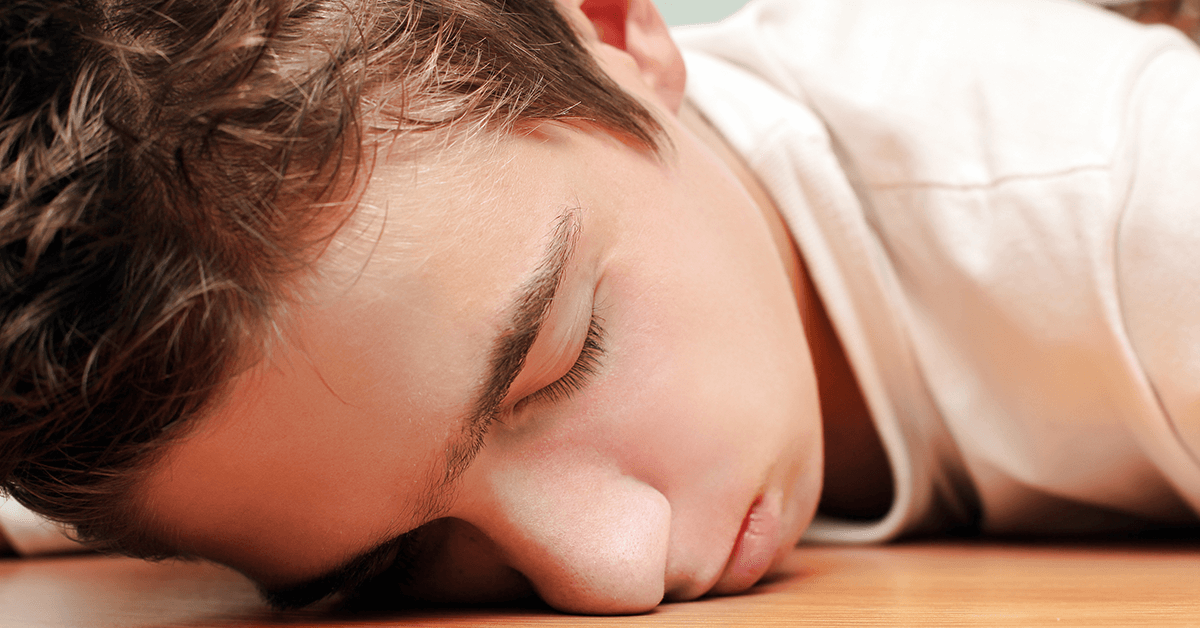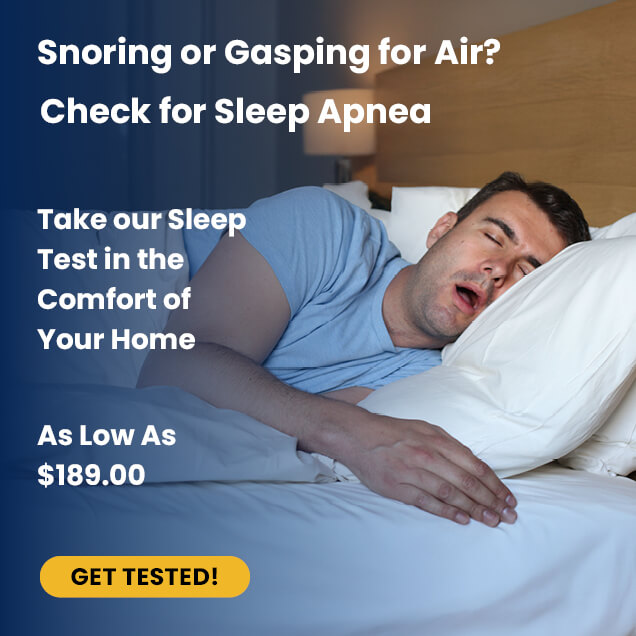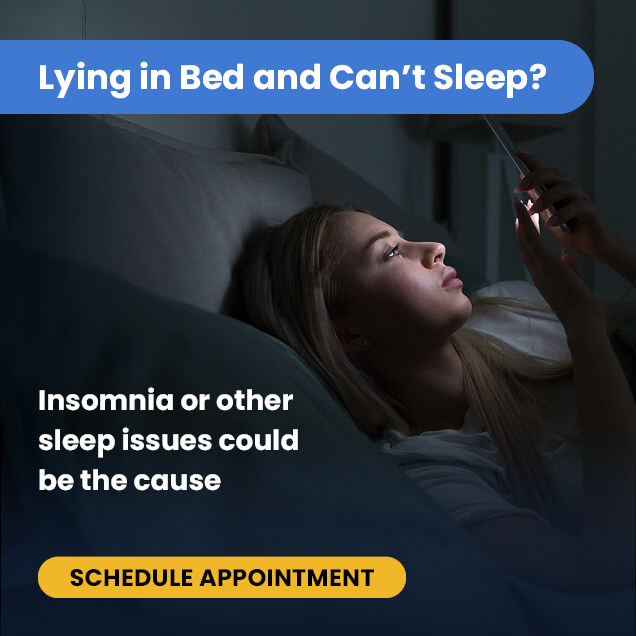Use the player to listen to the article and/or continue to read below.
Types of Narcolepsy | What Causes Narcolepsy? | Symptoms | Diagnosis | Treatment
Introduction
Narcolepsy is a chronic sleep disorder characterized by extreme drowsiness. A narcoleptic experiences overwhelming daytime sleepiness and, in some cases, sudden loss of muscle control, causing them to suddenly fall asleep regardless of the circumstances.[1]
Experts estimate that somewhere between 135,000-200,000 people in the United States have this sleep disorder; however, it often goes un-diagnosed.[2]
Keep reading to find out more about this relatively rare sleep disorder.
Types of Narcolepsy: Type 1 & Type 2
There are two types of narcolepsy. With narcolepsy type 1, a person suddenly loses muscle control, otherwise known as cataplexy. It is triggered by strong emotion and results in spontaneous sleep, despite the person being well-rested.
Narcolepsy type 2 occurs without cataplexy, which causes a person to experience severe drowsiness during the day.
While the symptoms of narcolepsy are brief, lasting only for a few minutes, they can take a toll on self-esteem and mental health. Narcolepsy makes ordinary tasks such as driving, cooking, or shopping dangerous because it’s impossible to predict future bouts of cataplexy or severe drowsiness.
Often, narcoleptics are only aware that they have the condition once symptoms have progressed in severity. The symptoms of narcolepsy can worsen for the first few years and then continue for life.
What Causes Narcolepsy?
There is no known cause of narcolepsy, although people with narcolepsy type 1 are found to have low levels of hypocretin, a type of chemical in the brain that stimulates wakefulness. The normal hypocretin level in people with normal sleep patterns is above 200 pg/mL. People with narcolepsy have less than 110 pg/mL of hypocretin.[3]
Research indicates that narcolepsy runs in the family, but most cases are not genetic. Pediatric narcolepsy can happen in children as young as 4 years old, but symptoms usually occur between 10 to 30 years of age. If one or more people in your family suffer from narcolepsy, you have a 20 to 40 times higher risk of having the same condition.[4]
Symptoms
1) Daytime Lethargy
Narcoleptics may feel sleepy during the day. They may also experience unresponsiveness, decreased alertness, or inactivity despite being well-rested. The severity of sleepiness is comparable to being sleep-deprived for 48-72 hours.[5]
2) Cataplexy (Sleep Attacks)
Cataplexy causes someone to fall asleep without warning. It can occur at any time of the day, especially when accompanied by intense emotions like anger, fear, or excitement. This state can persist for a couple of minutes.
Cataplexy coexists with symptoms such as slurred speech or muscle weakness. An excitable situation may cause someone with narcolepsy to feel their knees suddenly buckle or head droop uncontrollably before falling asleep.
It’s possible for people with narcolepsy to only have two episodes a year.
3) Sleep Paralysis
People with narcolepsy can sometimes experience sleep paralysis. This period of immobility may only last for a few seconds but can be frightening.
During sleep paralysis, a person may temporarily stop breathing, leading to further complications.
Not all people with narcolepsy experience sleep paralysis.
4) Rapid Eye Movement (REM)
People with narcolepsy frequently enter REM sleep rapidly within 15 minutes of falling asleep. The muscle weakness or dream activity associated with REM sleep can occur during wakefulness but may be absent during sleep. This may explain some symptoms of narcolepsy.[6]
5) Hypnagogic Hallucinations
These types of hallucinations happen as a narcoleptic is falling asleep. Various senses may come into play, including smell, sight, touch, and sound. These bouts may be so vivid that it’s possible to hallucinate the presence of people while asleep.
6) Other Symptoms
- Brain fog
- Lack of focus
- Memory lapses
- Exhaustion
- Fatigue
- Depression
Diagnosis
A Multiple Sleep Latency Test (MSLT) is the primary tool for diagnosing narcolepsy. Commonly known as the daytime nap study, it measures mean onset latency (the average time it takes you to fall asleep) and identifies sleep-onset REM periods (SOREMPS).
The MSLT takes place in a sleep clinic where you’re instructed to try to fall asleep, or nap, multiple times. You’ll be allowed to sleep for 15 minutes following sleep onset to allow the doctor to detect REM sleep. If after 20 minutes you are unable to fall asleep, the doctor will record your sleep latency as 20 minutes. The test occurs in 2-hour intervals to ensure you’ve had at least 4 or 5 chances to sleep.
A sleep latency of 8 minutes or less, plus two or more SOREMPS supports a diagnosis of narcolepsy in the appropriate clinical circumstance.[7]
Treatment
Narcolepsy is a chronic condition, which means it has no known cure. People with narcolepsy may undergo medication and lifestyle changes to manage the symptoms.
If you have narcolepsy, you can follow simple lifestyle tips, such as not eating heavy meals before bedtime, exercising daily, and taking regular naps.
Your quality of life may also improve when you have emotional support from loved ones and seek counseling. People with severe symptoms of narcolepsy may need to take medications such as Modafinil or Armodafinil.[8]
Prescribed drugs may help reduce sleepiness and promote alertness, but prolonged use may cause addiction.
If you are experiencing any of the symptoms listed above or have concerns about your sleep, it is always a good idea to speak with your doctor.
References:
- Barateau, L. & Dauvilliers, Y. (2019). Recent advances in treatment for narcolepsy. Therapeutic Advances in Neurological Disorders. 12(1):1 https://journals.sagepub.com/doi/pdf/10.1177/1756286419875622
- Doctormmdev. (2023, March 24). Are you at risk for narcolepsy?. Sonoran Sleep Center. https://sonoransleep.com/are-you-at-risk-for-narcolepsy/
- Nishino, S. et.al.(2000). Hypocretin (orexin) deficiency in human narcolepsy.The Lancet. 355(9197):19-40. https://doi.org/10.1016/S0140-6736(99)05582-8
- Clin, J. (1990). Narcolepsy. Author manuscript; available in PMC 2008 Feb 25. 7(1): 93–118. https://www.ncbi.nlm.nih.gov/pmc/articles/PMC2254143/
- Flygare, J. & Parthasarathy, S. (2014). Narcolepsy: Let the patient voice awaken us. 128(1):10-13. https://doi.org/10.1016/j.amjmed.2014.05.037
- National Institute of Neurological Disorders and Stroke (March 2020). Narcolepsy Fact Sheet. Retrieved from https://www.ninds.nih.gov/Disorders/Patient-Caregiver-Education/fact-sheets/narcolepsy-fact-sheet#:~:text=People%20with%20narcolepsy%20frequently%20enter,explain%20some%20symptoms%20of%20narcolepsy.
- Littner MR, Kushida C, Wise M, Davila DG, Morgenthaler T, Lee-Chiong T, Hirshkowitz M, Daniel LL, Bailey D, Berry RB, Kapen S, Kramer M, Standards of Practice Committee of the American Academy of Sleep Medicine SO Sleep. 2005;28(1):113. Practice parameters for clinical use of the multiple sleep latency test and the maintenance of wakefulness test. UpToDate. Retrieved November 19, 2020, from https://www.uptodate.com/contents/quantifying-sleepinesssearch=mslt&source=search_result&selectedTitle=1 ~34&usage_type=default&display_rank=1
- Thorpy, M.J. (2020).Recently Approved and Upcoming Treatments for Narcolepsy.CNS Drugs. 3(1):9–27. https://doi.org/10.1007/s40263-019-00689-1






